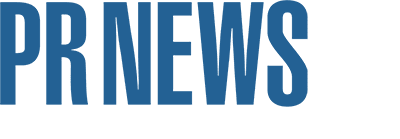
In 2025, most business leaders can rattle off their product risks, regulatory risks, even brand risks. But a more insidious threat lurks under it all: narrative risk—the danger that someone else tells your company’s story faster, louder or more convincingly than you do. And not always truthfully.
An example that illustrates this: the U.S. offshore wind industry, once heralded as a cornerstone of the clean energy transition, faced a clear narrative crisis in early 2025. Executive orders introducing policy uncertainty and funding freezes led to project delays and investor retreat, not due to technological failings but because of politically driven narrative shifts. This abrupt reversal rocked markets and cast doubt on the viability of wind power overall, illustrating how quickly external narratives can destabilize entire sectors.
Today, narrative risk isn’t just a reputational nuisance. It’s a strategic vulnerability that extends far beyond quarterly earnings. Public trust erodes, misinformation spreads and sectors critical to societal well-being—such as renewable energy, healthcare innovation and education technology—suffer setbacks that hinder progress on urgent challenges.
If the C-suite isn’t proactively shaping their company’s story, opportunistic competitors, disillusioned insiders or misinformation misanthropes are more than happy to do it for them. Indeed, the World Economic Forum’s 2025 Global Risks Report ranked AI-driven narrative attacks ahead of traditional economic, environmental and geopolitical threats.
Brand Is About Reputation, Narrative Is About Meaning
It’s tempting to lump narrative risk under brand management, but the distinction matters. Brand risk concerns how the public reacts to your actions: a product recall, a data breach, a lawsuit. Narrative risk concerns whether the public knows what you stand for in the first place, and whether that story remains intact when you’re not in the room.
Narrative control has always mattered, but the stakes are exponentially higher today. Narrative drift is no longer a slow-moving problem; it’s an immediate, destabilizing threat. Algorithmic outrage machines and social media’s amplification can turn small cracks into deadly chasms. When click-mining contrarians fill every narrative gap, your story needs to be strong enough and flexible enough to weather any storm.
Unfortunately, some spectacularly beneficial industries employ catastrophically weak storylines.
Umbrellas in a Hurricane
The offshore wind sector’s experience shows how even companies with strong fundamentals can lose narrative control. Offshore wind developers responded to their industry’s narrative crisis individually, not as a coordinated sector. They leaned heavily on technical, environment and economic arguments—megawatts produced, carbon avoided, jobs created—which failed to resonate against weird, emotionally charged attacks.
In a hurricane of misinformation, handing out umbrellas won’t get the people you need with you to safety. Offshore wind developers never fully grounded their story in rural revitalization, energy independence or patriotism—themes that might have defused political hostility. They also lacked a squad of relatable spokespeople—utility customers, turbine technicians, coastal business owners, veterans retrained for green jobs—who could retake the narrative and humanize the industry.
Product failures can be fixed. Regulatory fines can be paid. Even brand bruises can heal. But when you lose control of your story, you lose control of your future.
How to Take (and Keep) Control of Your Story
The good news is that narrative risk can be managed if treated with the urgency and substance it deserves.
Smart organizations are already moving. When Arla Foods faced a disinformation campaign attacking its organic products, it responded swiftly and credibly, reinforcing its commitment to quality and sustainability before misinformation could metastasize. Wayfair, targeted by conspiracy theories, immediately clarified its practices and recommitted to transparent communication, helping to inoculate its brand against rumor.
Companies serious about managing their narrative risk should treat it like any other strategic imperative.
- Codify your story.Document your purpose, values and vision clearly, so you are well-prepared to defend it.
- Monitor narrative drift.Use PR tools to track how your story is evolving across internal and external channels.
- Scenario plan for attacks.Prepare playbooks for anticipated mis-framings or misinformation risks.
- Counter hijacking attempts.Reframe facts immediately, activate credible voices and stay coordinated.
- Audit and adapt after the fact.Conduct post-crisis reviews to strengthen future narrative resilience.
If you don’t treat narrative control as a standing investment—not just a crisis response—you’re building your future on borrowed trust. And, if you’re doing well—or perceived as a potential threat—you are very likely to be targeted by someone.
Narrative Ownership Is Now a Leadership Skill
Today, controlling your narrative is as fundamental as controlling your financials. No longer a “nice to have” PR exercise, it is existential. Companies that prioritize narrative control don’t just weather storms better. They build stronger relationships with customers, partners, employees, investors and the broader public. They move markets by moving minds. And they gain—and maintain—competitive advantage.
So, tell your story with clarity and conviction, or others will step into the gap and create one for you. And you probably won’t like how they tell it.
Marianne O’Connor is CEO of Sterling Communications.
